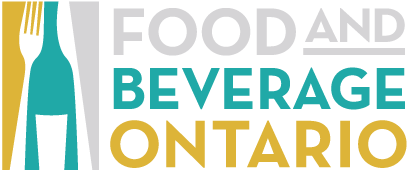We know HACCP has to do with food safety. But what is HACCP (pronounced ‘ha-ssup’) really? What does it mean and what does an organization need to do to have HACCP certification? HACCP stands for Hazard Analysis and Critical Control Points (HACCP).
HACCP is definitely not new to the food industry. It was initially developed in 1959 by the Pillsbury Company, The U.S. Army Natick Soldier Systems Center (NSSC) and The National Aeronautics and Space Administration (NASA). The original intent of HACCP was to guarantee the safety of food on space missions, to deal with concerns about crumbs and liquid droplets in zero gravity and ultimately to deal with concerns related to microbiological safety.
In simplest terms the goal of HACCP is to apply a common sense application of technical and scientific knowledge to a specific food production. Part of the HACCP process is to systematically prioritize and control hazards as well as to identify where and how these hazards might occur either in your ingredients, your finished product, your process or your distribution. When HACCP principles are in place, there are defined actions implemented to prevent, eliminate and reduce potential hazards. That’s not all. The next important part of HACCP is monitoring and verifying the applications and effectiveness of these actions to make sure the risks of hazards are decreased. The end result is the production of a food product that is much safer to consume.
Step 1: Put together your HACCP team
To prepare for an effective food safety HACCP program, the first step in the process is to choose your HACCP team. Ideally your HACCP team should represent all parts of your operation. Quality assurance and quality control personnel are an essential part of every HACCP team, but production, maintenance, purchasing and management employees should not be overlooked and have much to contribute to the success of implementing a HACCP program.
Step 2: Prepare a flow chart
After choosing your HACCP team, the next preparation step for the HACCP implementation process involves describing your products and identifying their intended use. This is not a difficult step and is simply acknowledging and documenting what you already know about your product and its destination after leaving your production facility. Creating a diagram of the flow of product from receiving to shipping is the next preparation step and is an excellent exercise in understanding how materials, finished product and people flow through your plant.
Step 3: Identify your hazards
The next step is to conduct a hazard analysis of your process and raw materials. Conducting hazard analyses of your process involves asking the question what are the possible biological, chemical and physical hazards that can occur in my process?
A biological hazard is one that can cause illness. It can involve contamination by bacteria, virus, parasite or any organism that can produce a toxin.
A typical chemical hazard is one that can cause injury or poisoning and includes even naturally occurring substances such as allergens. Other chemical hazards can even include intended ingredients but used in a manner as to exceed the intended amount. Antibiotics, pesticides, herbicides, fungicides are examples. Chemical hazards also include ingredients that are accidentally added – such as cleaning chemicals, paint or pest control chemicals.
A typical physical hazard is any foreign object accidentally added that can cause injury. Examples of this are glass, metal grindings, screws, bolts, stones, pebbles and hard plastics.
Step 4: Determine the CCPs and limits
The next important principle in the development of your HACCP program is determining the critical control points (CCPs) and establishing critical limits. A CCP is any step (or activity) which adds an element of control to the production environment and can be applied to your process. The CCP is essential to prevent or eliminate a food safety hazard or reduce it to an acceptable level. An example of a biological CCP to reduce a possible biological hazard involves a heating step in your process for a specific time and temperature. An example of a physical CCP to reduce a possible physical hazard involves having your product go through a metal detector. Once the CCPs are established the limits for each point need to be established. For example, for the elimination of a potential biological hazard we would cook a food product at a designated minimum temperature for a designated minimum amount of time.
Step 5: Don’t forget the prerequisite program!
For a complete HACCP program to be in place a prerequisite program is also required. A prerequisite program reduces the likelihood of certain hazards from occurring. Often prerequisite programs are facility wide and if not followed, bring significant food safety concerns. Many recalls are not related to CCPs but rather to failures in prerequisite programs. The WHO definition of Prerequisite Programs is practices needed prior to and during implementation of HACCP which are essential for food safety. They can be divided into the following groups: premises, personnel, transportation, sanitation, equipment, and recalls. Procedures need to be written and implemented and need to be made available to everyone who has a role in monitoring your process, implementing corrective actions, and verifying that the steps implemented are effective. Finally, procedures need to be in place for record keeping and documentation.
In essence HACCP is a system what when properly designed, implemented and maintained, results in the production of safer food, improved workplace safety, increased market access, protection against liability and sets the company on a pursuit for continuous improvement.




